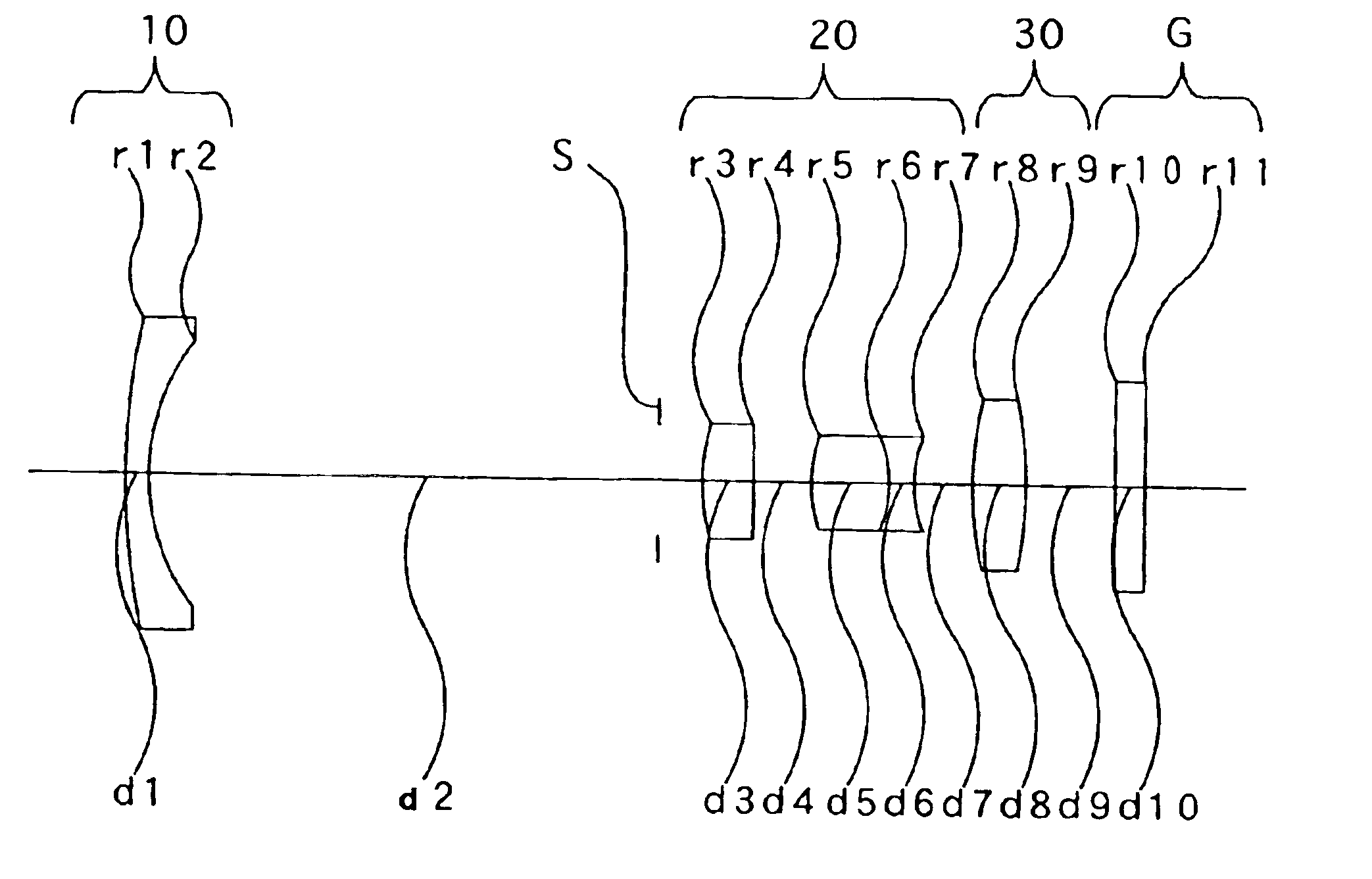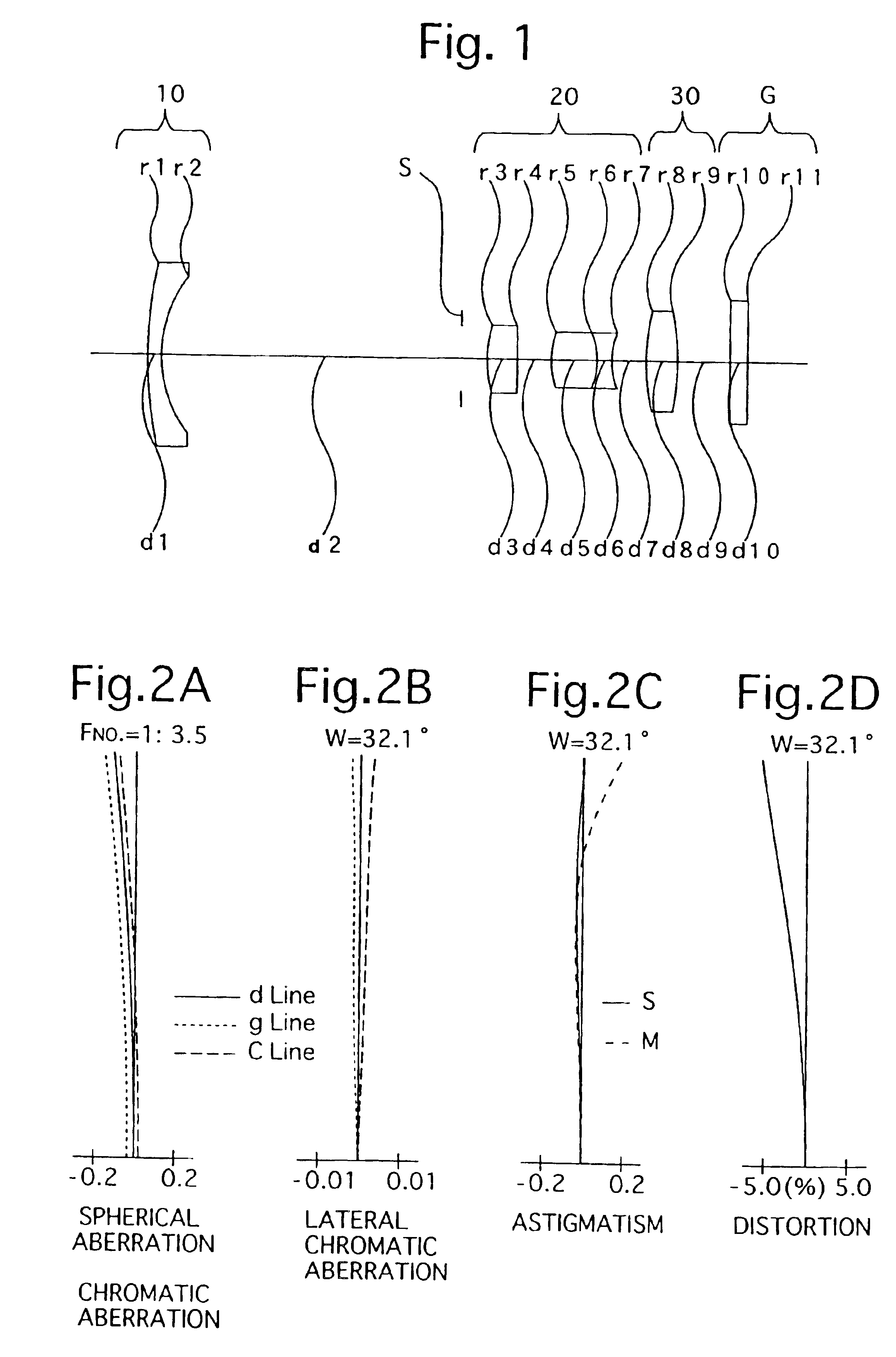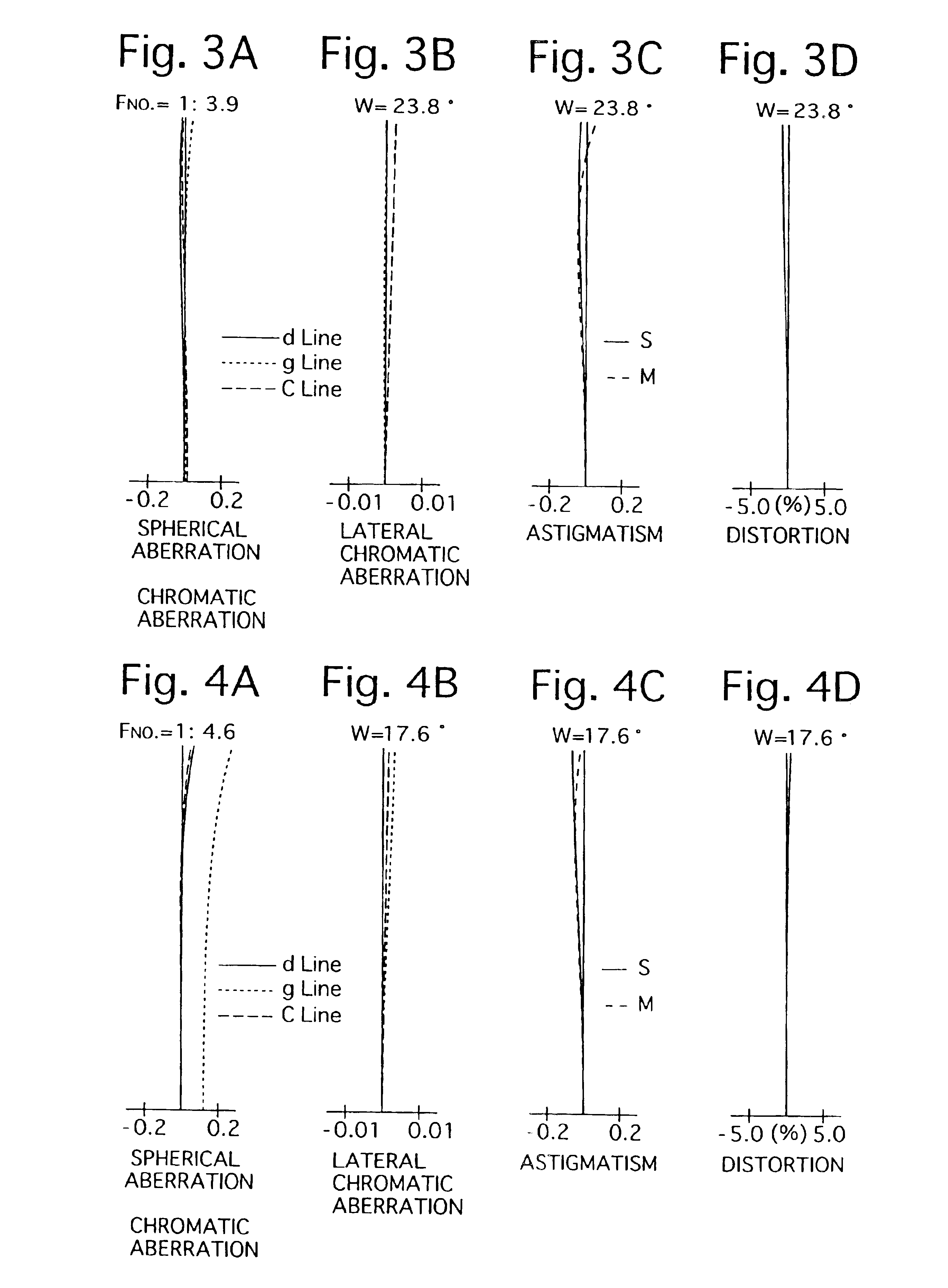Zoom lens system
a zoom lens and lens body technology, applied in the field of zoom lens systems, can solve the problems of color irregularities, unsuitable use of solid-state image sensors, and decrease of peripheral illumination, and achieve the effect of simple structure and sufficient optical performan
- Summary
- Abstract
- Description
- Claims
- Application Information
AI Technical Summary
Benefits of technology
Problems solved by technology
Method used
Image
Examples
embodiment 1
[Embodiment 1]
[0099]FIG. 1 is the lens arrangement of a zoom lens system according to the first embodiment of the present invention. FIGS. 2A through 2D show aberrations occurred in the lens arrangement shown in FIG. 1 at the short focal length extremity. FIGS. 3A through 3D show aberrations occurred in the lens arrangement shown in FIG. 1 at an intermediate focal length. FIGS. 4A through 4D show aberrations occurred in the lens arrangement shown in FIG. 1 at the long focal length extremity. FIG. 25 shows the schematic lens-group moving paths of the zoom lens system according to the first embodiment. Table 1 shows the numerical data of the first embodiment.
[0100]The negative first lens group 10 includes a negative meniscus lens element having the convex surface facing toward the object.
[0101]The positive second lens group 20 includes three lens elements, i.e., a positive biconvex lens element, and cemented lens elements having a positive biconvex lens element and a negative biconcav...
embodiment 2
[Embodiment 2]
[0105]FIG. 5 is the lens arrangement of a zoom lens system according to the second embodiment of the present invention. FIGS. 6A through 6D show aberrations occurred in the lens arrangement shown in FIG. 5 at the short focal length extremity. FIGS. 7A through 7D show aberrations occurred in the lens arrangement shown in FIG. 5 at an intermediate focal length. FIGS. 8A through 8D show aberrations occurred in the lens arrangement shown in FIG. 5 at the long focal length extremity. Table 2 shows the numerical data of the second embodiment. The basic lens arrangement of the second embodiment is the same as the first embodiment, and upon zooming each lens group likewise moves according to the schematic lens-group moving paths of FIG. 25.
[0106]
TABLE 2FNO. = 1: 3.5-3.9-4.5f = 5.90-8.00-11.00 (Zoom Ratio: 1.86)W = 32.1-23.8-17.6fB = 0.00—0.00—0.00D2 = 18.79-12.57-7.80D9 = 3.00-4.40-6.40Diaphragm Position on the object sidefrom Surface No. 3: 1.50 1.50 1.50Surface No.rdNdνd127....
embodiment 3
[Embodiment 3]
[0107]FIG. 9 is the lens arrangement of a zoom lens system according to the third embodiment of the present invention. FIGS. 10A through 10D show aberrations occurred in the lens arrangement shown in FIG. 9 at the short focal length extremity. FIGS. 1A through 11D show aberrations occurred in the lens arrangement shown in FIG. 9 at an intermediate focal length. FIGS. 12A through 12D show aberrations occurred in the lens arrangement shown in FIG. 9 at the long focal length extremity. FIG. 26 shows the schematic lens-group moving paths of the zoom lens system according to the third embodiment. Table 3 shows the numerical data of the third embodiment.
[0108]The negative first lens group 10 includes a negative meniscus lens element having the convex surface facing toward the object.
[0109]The positive second lens group 20 includes three lens elements, i.e., a positive biconvex lens element, and cemented lens elements having a positive biconvex lens element and a negative bic...
PUM
 Login to View More
Login to View More Abstract
Description
Claims
Application Information
 Login to View More
Login to View More - R&D
- Intellectual Property
- Life Sciences
- Materials
- Tech Scout
- Unparalleled Data Quality
- Higher Quality Content
- 60% Fewer Hallucinations
Browse by: Latest US Patents, China's latest patents, Technical Efficacy Thesaurus, Application Domain, Technology Topic, Popular Technical Reports.
© 2025 PatSnap. All rights reserved.Legal|Privacy policy|Modern Slavery Act Transparency Statement|Sitemap|About US| Contact US: help@patsnap.com



